Can a cat truly captivate your heart yet trigger your allergies in a sweeping flourish of fur? When it comes to Norwegian Forest Cats, many pet owners ponder if these majestic creatures are hypoallergenic or if their thick double coats spell out allergy nightmares.
Originating from the pristine forests of Norway, Norwegian Forest Cats, also known as “skogkatt” in Norwegian or “Wegie” in the United States, boast resilient physiques and friendly, independent temperaments. Weighing up to 18 pounds and stretching up to 36 inches in length, these cats are notable for their plush, long-haired coats that come in a variety of colors and patterns. Designed to insulate against harsh Scandinavian winters, these coats are a marvel of natural engineering but can present challenges for allergy sufferers.
With an impressive lifespan of up to 16 years, Norwegian Forest Cats require dedicated weekly grooming, especially during the shedding season in spring. Their intelligence and gentle vocalizations make them endearing companions who bond closely with their humans, preferring to stay nearby without necessarily occupying your lap.
Key Takeaways
- Norwegian Forest Cats are not hypoallergenic and can trigger pet allergies.
- These cats have a thick double coat, which is not ideal for reducing pet allergies.
- Regular grooming is essential to minimize loose fur and dander.
- Norwegian Forest Cats are large, robust felines with a life expectancy of up to 16 years.
- They require a lean build to maintain health despite their large size.
- These cats are known for their intelligence and low vocalization.
Understanding Cat Allergies
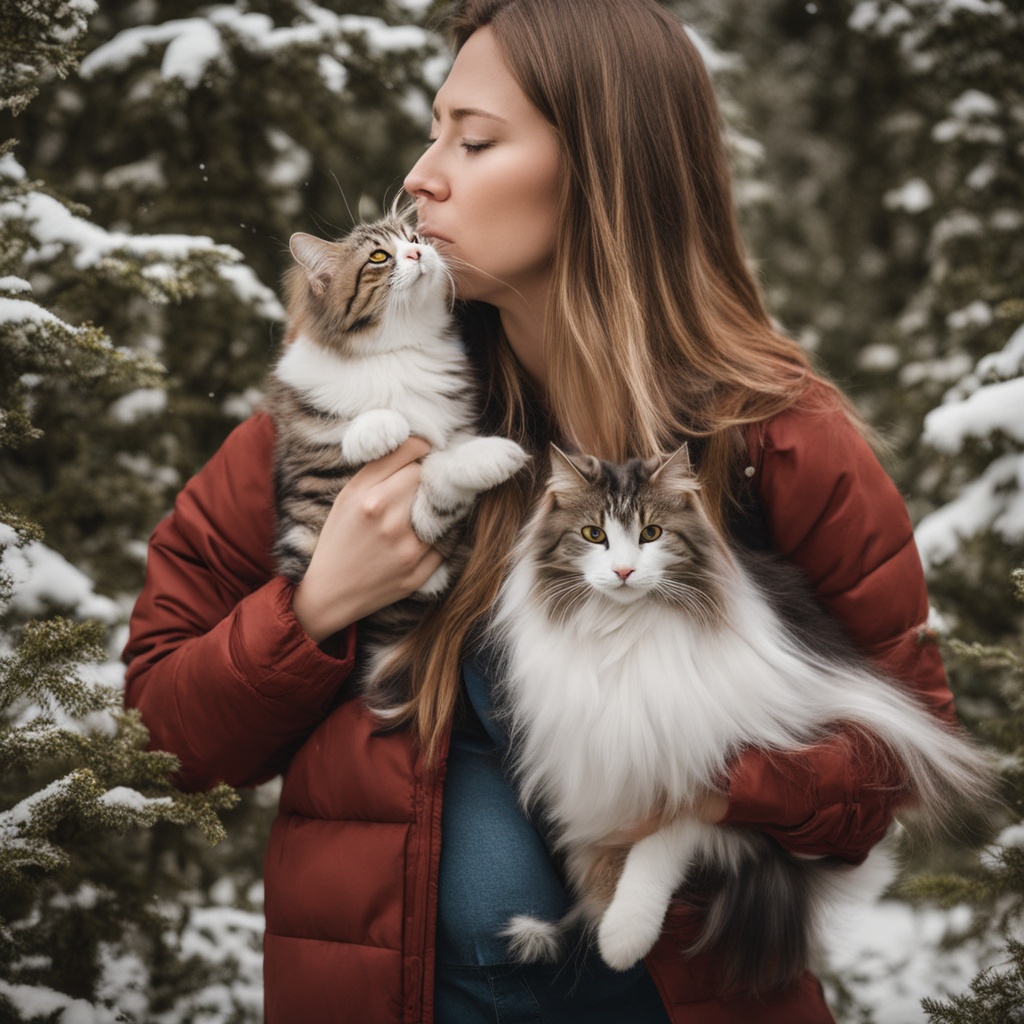
Cat allergies can be quite the conundrum. No matter how adorable those fluffy companions are, for some of you, they may spell sneezes, itches, and congestion. Understanding what triggers these unpleasant reactions can help you manage them better and enjoy the company of your feline friends.
Common Cat Allergy Symptoms
If you find yourself sneezing, with itchy and watery eyes, a runny or congested nose, and the occasional skin rash after being around cats, you are likely experiencing cat allergies. These symptoms can emerge quickly after contact or progressively over time, making it essential to identify and manage them swiftly.
Allergens Produced by Cats
The primary culprits behind your discomfort are allergens produced by cats, especially the protein Fel d 1. This pesky protein resides in cats’ dead skin cells (dander), saliva, and even urine. Norwegian Forest Cats, with their dense double coats, are potential bearers of these allergens. Although no cat breed is genuinely hypoallergenic, some can produce fewer allergens or have traits that mitigate shedding, which may offer some relief for those afflicted. Still, taking allergy precautions and focusing on dander control is key to maintaining a harmonious pet relationship.
Are Norwegian Forest Cats Hypoallergenic?

When pondering whether Norwegian Forest Cats are hypoallergenic, it’s essential to understand what “hypoallergenic” truly means. The term implies that an item or creature is less likely to trigger an allergic reaction. However, no feline, including our majestic Norwegian Forest Cat, is completely free from causing allergies.
What Hypoallergenic Means
Hypoallergenic cat breeds are those deemed to cause fewer allergies. But hold your tail, there’s no magical breed entirely devoid of allergy-inducing proteins. The proteins that typically spark pet allergies, including Fel d 1, are still present in all cats, even if in lesser amounts.
Comparison with Other Hypoallergenic Breeds
Let’s line up our furry suspects. Comparing the Norwegian Forest Cat to other breeds considered hypoallergenic – like the sleek Sphynx or the plush Russian Blue – it becomes evident they don’t share the same characteristic. Hypoallergenic cat breeds like these might produce fewer allergens, making them more suitable for allergy-prone individuals.
Sadly, while Norwegian Forest Cats enchant with their personality and beauty, they might not be the purrfect choice for those battling severe pet allergies.
The Norwegian Forest Cat’s Coat and Shedding
Distinctive and regal, the Norwegian Forest Cat boasts a luxurious double coat that has adapted to withstand the harsh Scandinavian climate. This unique feature not only adds to their charm but also plays a crucial role in their shedding patterns and dander control, impacting those with pet allergies.
Characteristics of the Double Coat
The double coat of a Norwegian Forest Cat consists of a water-resistant outer layer and a dense undercoat. This combination serves as an excellent insulator against cold weather, keeping these cats warm and dry. However, this coat’s maintenance requires regular grooming to manage dander control and to keep it free from tangles and matting, which is vital for hypoallergenic cats.
Shedding Patterns
Shedding in Norwegian Forest Cats follows distinct seasonal patterns. They experience heavy molting in the spring and to a lesser extent in the fall, as they adjust their coats for weather changes. This seasonal shedding means that you must be diligent with grooming practices, particularly in these periods, to manage shedding patterns and minimize the spread of allergens that might trigger pet allergies.
- Spring: Heavy shedding as the thick winter coat is discarded.
- Summer: Minimal shedding, maintaining a lighter summer coat.
- Fall: Mild shedding to prepare for the winter coat’s growth.
- Winter: Minimal shedding, the dense coat remains for insulation.
Allergy Precautions for Norwegian Forest Cat Owners
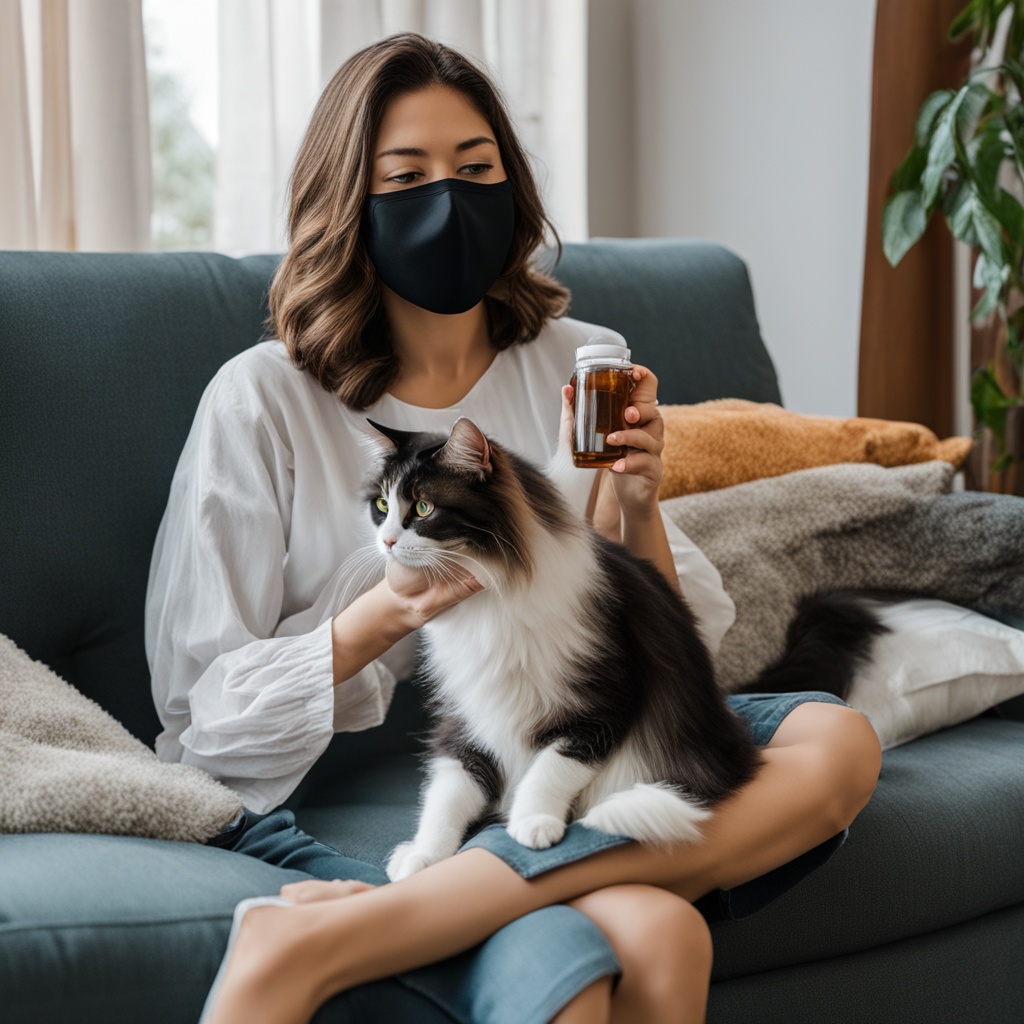
Caring for Norwegian Forest Cats involves some smart planning, especially if you have sensitivities to pet allergies. Embrace these allergy precautions and continue enjoying your feline companion without a hitch.
- Grooming Routine: Regular grooming is essential. Brushing and bathing your cat can significantly reduce the amount of loose fur and dander, which are common triggers for cat allergies. Think of it as bonding time with your furry friend!
- Keeping a Clean Home: A clean environment is your first line of defense against pet allergies. Frequent vacuuming and using air purifiers can minimize airborne allergens, making your home a safer space for those with cat allergies.
- Hypoallergenic Bedding: Invest in hypoallergenic bedding and ensure to launder it regularly. This extra step can help significantly in managing allergen levels within the home, providing a snug, allergen-free sanctuary.
Finally, remember that staying on top of grooming tasks and cleanliness can help manage pet allergies effectively. Though Norwegian Forest Cats aren’t completely hypoallergenic pets, with these proactive measures, you can reduce the risks and embrace your pet-parenting journey without sneezing through it.
The Grooming Needs of Norwegian Forest Cats

When it comes to grooming needs, Norwegian Forest Cats require a bit more TLC. These hypoallergenic cats boast a beautiful, dense double coat that needs weekly brushing to keep it in tip-top shape. As nature’s own dander control system, regular grooming prevents matting and helps reduce pet allergies.
During their shedding season, typically in the spring, you’ll find these feline beauties need daily grooming sessions to manage the excess fur. This not only keeps your living space cleaner but also minimizes allergens. Remember, addressing pet allergies also means paying attention to your cat’s hygiene. Regular baths, nail trims, and ear checks are essential in keeping your cat healthy and happy.
Here’s a quick look at what their grooming schedule might include:
| Task | Frequency | Benefits |
|---|---|---|
| Brushing | Weekly (Daily During Shedding) | Reduces matting, dander control |
| Bathing | Occasional | Minimizes allergens, keeps coat clean |
| Nail Trimming | Monthly | Prevents overgrowth, reduces scratching |
| Ear Checking | Monthly | Prevents infections |
With these simple grooming tips, managing your cat’s grooming needs becomes a breeze, ensuring your home remains a haven even for those with pet allergies. So, grab that brush, and let your Norwegian Forest Cat strut its fabulous fur without leaving a fur-mageddon in its wake!
Living with a Norwegian Forest Cat if You Have Allergies

Living with a Norwegian Forest Cat can be a joy, even if you suffer from pet allergies. Implementing various strategies to control dander and allergens can make a world of difference in managing symptoms and ensuring a harmonious coexistence between you and your fluffy friend. Let’s dive into some effective approaches to keep those allergens in check.
Dander Control Strategies
Controlling dander is paramount when dealing with pet allergies. Here are a few dander control strategies that can be very effective:
- Use HEPA filters: These filters are designed to capture tiny airborne particles, including pet dander, helping to keep your living space allergen-free.
- Regular Grooming: Brush your Norwegian Forest Cat regularly to remove loose fur and dander. This will help minimize the allergens in your home.
- Frequent Cleaning: Keeping a clean home is essential. Vacuuming frequently with a HEPA filter vacuum cleaner can reduce lingering dander.
Tips for Reducing Allergens at Home
Besides controlling dander, there are additional allergy precautions you can take to create a more allergy-friendly environment:
- Restrict Cat’s Access: Limiting your cat’s access to certain areas, especially bedrooms, can significantly reduce allergen exposure in those spaces.
- Hand Hygiene: Always wash your hands after petting or handling your cat to prevent transferring allergens to your face and other surfaces.
- Habitat Enhancements: Invest in cat trees and designated play areas to contain your cat’s fur and dander to specific spots in your home.
By integrating these dander control strategies and allergy precautions into your daily routine, you can enjoy the companionship of a Norwegian Forest Cat while keeping pet allergies at bay. Remember, a little effort goes a long way in creating a comfortable living environment for both you and your fur buddy.
Why Some People Might Have Allergies to Norwegian Forest Cats
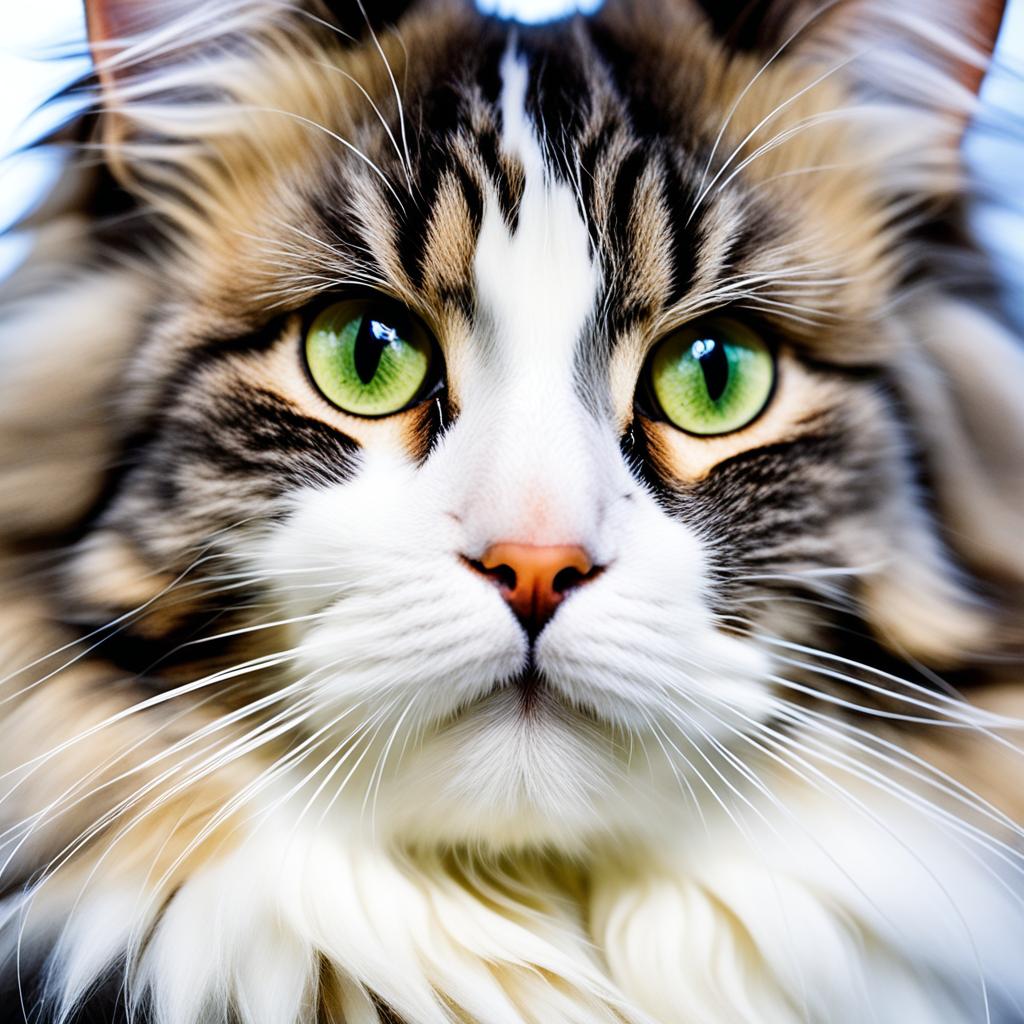
Pet allergies can indeed throw a wrench in the joyful experience of having a furry friend. Often, you may wonder, Are Norwegian Forest Cats Hypoallergenic? Alas, these majestic felines are not.
When it comes to cat allergies, several factors come into play. Let’s dive into the genetic and environmental aspects that might be making your nose twitch.
Genetic Factors
The key to understanding allergies lies within your own genetic makeup. Some people are predisposed to react adversely to proteins in cat dander. It’s a cruel twist of fate that certain genes can make you sneeze at the mere sight of a Norwegian Forest Cat!
Environmental Impact
Don’t only blame it on your genes. Environmental impact plays a significant role as well. The presence of other allergens in your home, like dust mites or pollen, can amplify your reactions. Humidity levels also exacerbate cat allergies, making it even harder for you to coexist with your furry companion. Imagine, a poorly ventilated room filled with allergens is practically a disaster waiting to happen for your immune system.
The combination of genetic factors and environmental triggers can make allergy management a bit of a challenge. However, understanding these elements can help you take the necessary steps to alleviate your symptoms.
Other Hypoallergenic Cat Breeds to Consider
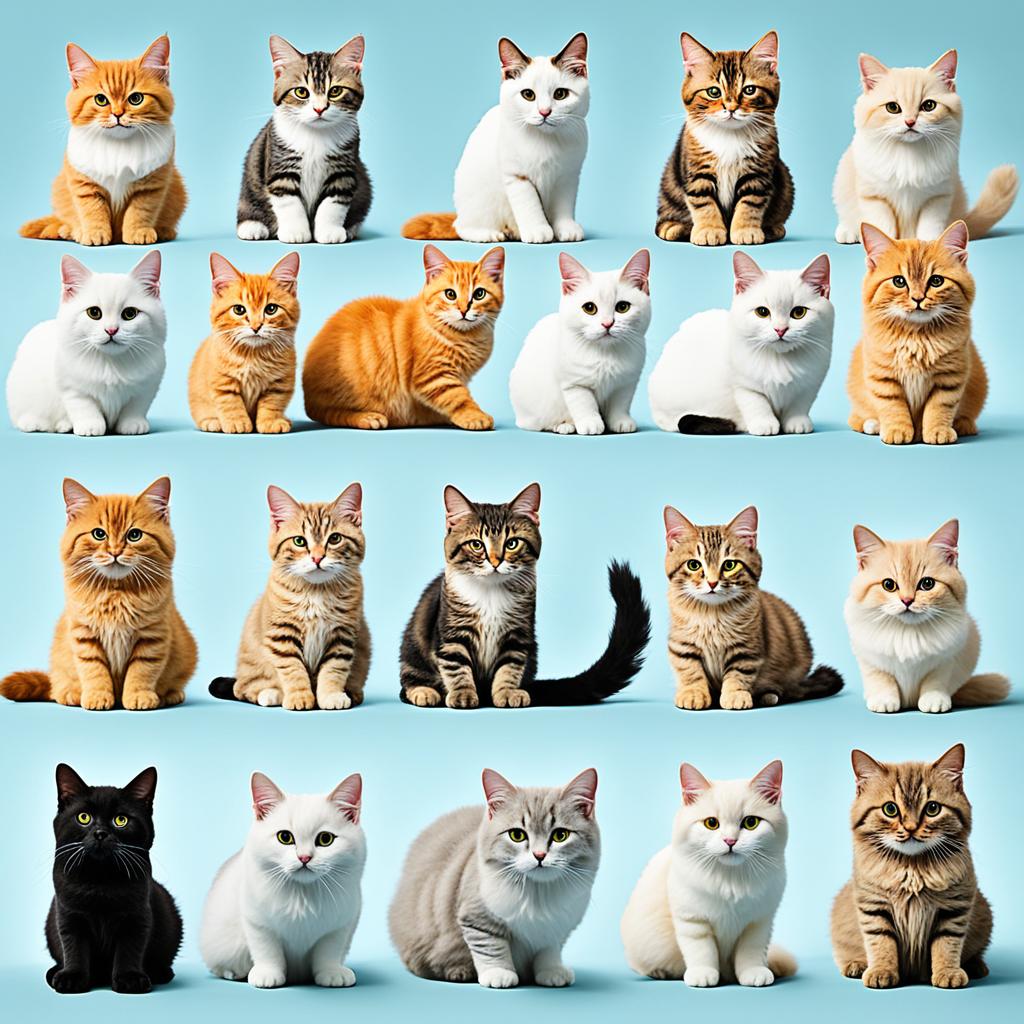
If you are on the lookout for hypoallergenic pets, there is good news: several cat breeds are known to produce fewer allergens. Such hypoallergenic cat breeds can be a more suitable choice if you are allergic to cats.
- Sphynx: This breed is famous for its lack of fur, which means much less shedding and fewer allergens. However, you’ll need to give your Sphynx regular baths to eliminate the natural oils on their skin.
- Devon Rex: The Devon Rex has a unique, curly coat, which tends to trap far fewer allergens. They are not completely hypoallergenic, but their minimal shedding can help keep pet allergies at bay.
- Cornish Rex: Similar to the Devon Rex, the Cornish Rex also has a wavy coat that does not shed as much, making it a better option for individuals with pet allergies.
- Russian Blue: The Russian Blue’s dense double coat actually helps trap allergens, preventing them from becoming airborne. Their grooming habits and lower production of the Fel d 1 protein further reduce allergy risks.
While exploring these hypoallergenic cat breeds, it’s wise to spend some time with any potential pet before making a commitment. This ensures they don’t trigger your pet allergies, giving you a more harmonious and sneeze-free companionship.
The Appeal of Norwegian Forest Cats
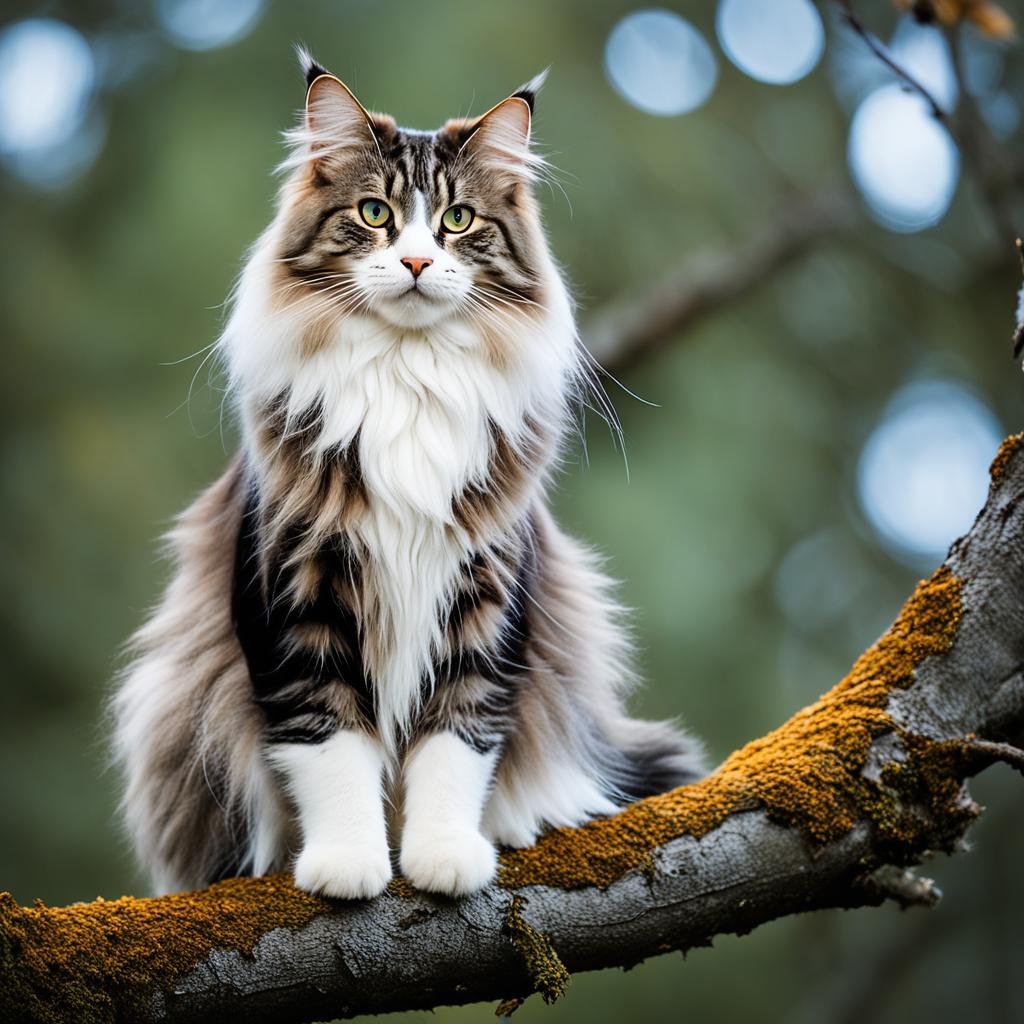
These majestic felines, while not truly hypoallergenic cats, boast a captivating set of qualities that appeal to many prospective pet owners. Their robust nature and affectionate demeanor offer a unique blend of strength and companionship. Let’s dive into what sets the Norwegian Forest Cat apart.
Personality Traits
When it comes to the Norwegian Forest Cat personality, you’re in for a treat. These cats are known for their sociability, playful antics, and impressive intelligence. They’re not only friendly but also form strong attachments with their human companions. You’ll find them coexisting seamlessly with respectful dogs and other cats, bringing harmony to a multi-pet household. Despite their independent streak, these cats love being around their families, showcasing a remarkable balance that many pet owners crave.
Physical Attributes
The physical attributes of the Norwegian Forest Cat are nothing short of awe-inspiring. Imagine a broad chest and substantial bone structure that echoes their rugged Norwegian roots. Their almond-shaped eyes, available in stunning shades of green, gold, and copper, are truly captivating. Add to this their iconic bushy tail and water-resistant double coat, and you have a feline that combines elegance with resilience. While they are sizable, it’s essential for them to maintain a lean physique to avoid potential health issues.
| Feature | Description |
|---|---|
| Personality Traits | Sociable, playful, intelligent, and friendly |
| Physical Attributes | Broad chest, substantial bone structure, almond-shaped eyes, bushy tail, water-resistant double coat |
| Compatibility | Gets along well with respectful dogs and other cats |
Health Considerations for Norwegian Forest Cats

When it comes to Norwegian Forest Cat health, there are a few key factors to keep in mind to ensure they lead long, healthy lives. These majestic felines are generally robust, but there are common ailments they might be predisposed to. Understanding these can help you provide the best care possible.
Common Ailments
Norwegian Forest Cats can face specific health challenges, despite their sturdy appearance. Some of the common ailments include:
- Hypertrophic Cardiomyopathy (HCM): A common heart disease in cats, causing thickening of the heart walls.
- Hip Dysplasia: A genetic condition that affects the hip joints, leading to arthritis and pain.
- Glycogen Storage Disease Type IV: A rare inherited metabolic disorder affecting the breakdown and storage of glycogen.
These common ailments emphasize the importance of seeking out reputable breeders who perform health screenings to prevent passing on genetic disorders to your feline companion.
Preventative Care
Preventative care plays a crucial role in maintaining Norwegian Forest Cat health. Regular veterinary check-ups, a balanced diet, and physical activity are essential in mitigating the risk of common ailments. Here’s a handy checklist:
- Schedule annual veterinary visits for comprehensive health assessments.
- Feed a balanced diet tailored to their specific needs and life stage.
- Encourage moderate exercise to keep them active and maintain a healthy weight.
- Ensure regular grooming to minimize issues related to their dense double coat.
| Preventative Measure | Benefits |
|---|---|
| Annual Veterinary Visits | Early detection of health issues, update on vaccinations. |
| Balanced Diet | Supports overall health, prevents obesity-related issues. |
| Moderate Exercise | Maintains mobility, strengthens muscles, and prevents excess weight gain. |
| Regular Grooming | Prevents matting and skin issues, reduces allergen spread. |
By focusing on these preventative care measures, you can significantly enhance Norwegian Forest Cat health and ensure their well-being as hypoallergenic pets in your household.
Conclusion
While Norwegian Forest Cats may not be the answer for those seeking hypoallergenic cats, their allure goes beyond a simple allergen concern. These majestic felines, deeply intertwined with Norway’s rich history and Norse mythology, offer a captivating presence and companionship that is difficult to rival.
If you are prone to pet allergies, it’s wise to be well-prepared before welcoming a Norwegian Forest Cat into your home. Thorough grooming routines and maintaining a clean living environment can help manage potential allergens. However, if severe allergies are a concern, considering breeds known for producing fewer allergens could be a more suitable option.
At the end of the day, the decision involves more than just allergy considerations. Norwegian Forest Cats present a blend of unique traits, from their robust health and striking appearance to their engaging personalities. Weighing their grooming and health needs against the irresistible companionship they provide will guide you in making an informed choice.




